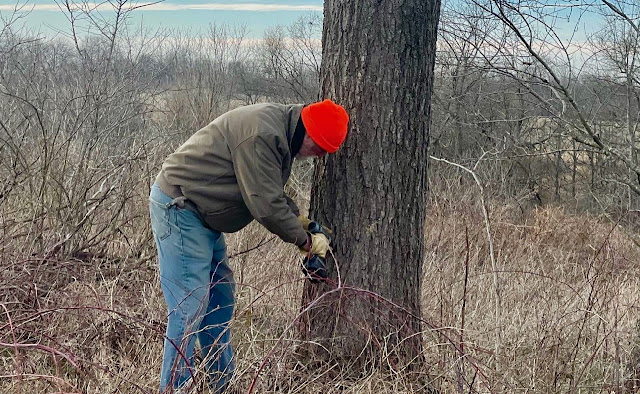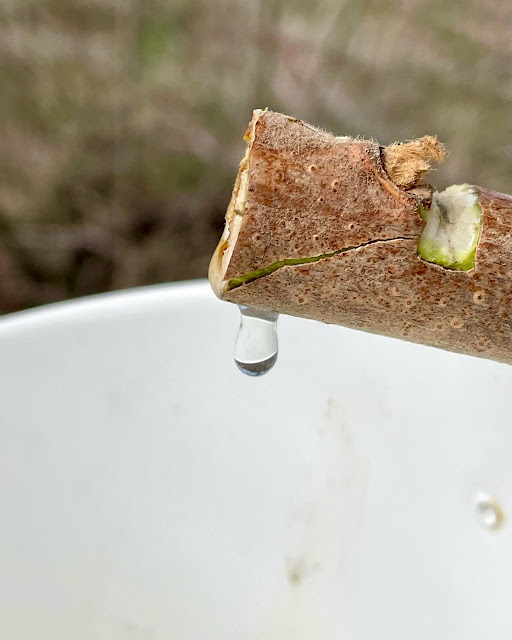Life on Farm Dover continues to amaze me, even after nearly a dozen years of living here. There is always something happening in the gardens, fields or woods that fascinates me. This past week it was the startling discovery that we could tap our black walnut trees (of which we have plenty) for sap, that could then be boiled down to a most-delicious sweet syrup.
If you read this blog with any regularity, you know that I love to forage for wild foods and, while I never claim that I can feed us on them exclusively, I do appreciate knowing that I can walk out the back door with a bucket and come home most days with ingredients for a very local, very fresh dinner. The addition of syrup has added a whole new basic taste (sweet) that I can cook with, adding panache to pancakes and waffles, oatmeal and sweet salad dressings. Yes, I know honey, fruits and berries are also sweet, but not like this syrup: complex and butterscotchy.
It all started with reading a blog entry from Practical Self Reliance covering 27 trees to tap for syrup. I was amazed that all kinds of hardwood trees could be tapped. The more I learn about trees, the more in awe I am of them.
I suppose I always knew that sap flows through sapwood, part of the outer tree trunk, delivering water, sugars, and nutrients throughout the tree. But I'm not sure I understood that sap production actually begins in warm summer months when photosynthesis creates carbohydrates that get stored in the tree as starch. It then gets converted to sugar that dissolves into the sap, which is stored for the winter. Beginning in late winter, the weather provides just the right conditions (alternating freeze/thaw cycles) to produce sap that can be collected to make syrup.
With some quick Googles, we were on a roll, figuring out how to harvest about 8 quarts of sap, resulting in one, very precious, bottle of syrup.
Because we didn't have any tapping supplies on hand, we made do. I carved spigots (also called spiles) from elder and sumac trees, hollowing them out with metal prods.





No comments:
Post a Comment